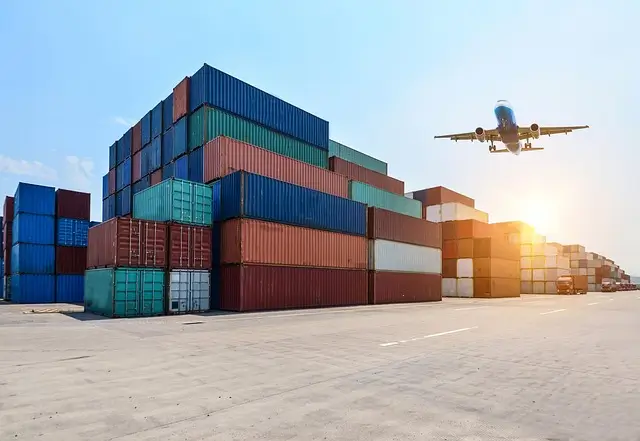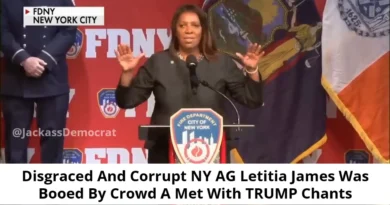Trump Levels The Playing Field With Tariffs
Understanding the Tariff Tug-of-War: How EU Tariffs on U.S. Products Led to Trump’s Retaliatory Measures
Trump Levels The Playing Field With Tariffs. In today’s interconnected global economy, trade policies are often at the center of heated political debates. One of the most visible tools in a nation’s trade policy arsenal is the tariff—a tax imposed on imported goods.
While many people may have heard about tariffs in the news, especially during the Trump administration, the underlying reasons and complexities behind them remain a mystery for many. In this post, we’ll break down the situation: explaining why tariffs exist, how the European Union (EU) has imposed tariffs on U.S. products that many consider “unfair,” and why President Trump turned to tariffs as a way to level the playing field. We’ll also examine the types of tariffs involved, what they mean for everyday consumers, and what Trump’s proposed tariffs aimed to achieve.
Table of Contents
What Are Tariffs and Why Do They Matter?
At its most basic level, a tariff is a tax levied on goods as they cross international borders. Tariffs serve several purposes:
- Protecting Domestic Industries: By making imported goods more expensive, tariffs can encourage consumers to buy domestically produced products, helping local industries compete.
- Generating Revenue: Tariffs provide governments with additional funds.
- Negotiating Trade Deals: Tariffs can be used as bargaining chips in trade negotiations, encouraging other countries to reduce their own trade barriers.
In an ideal world, free trade—a system where goods and services move across borders with minimal restrictions—promotes efficiency and economic growth. However, free trade only works well when all parties play by the same rules. When one side is perceived to be imposing unfair measures, such as higher-than-average tariffs on specific goods, disputes can arise. This is precisely what happened between the U.S. and the EU.
The EU’s Tariff Structure and Its Impact on U.S. Products
The European Union operates as a single market for its 27 member states, using a common external tariff policy on goods coming from non-EU countries. This means that all imports from outside the EU are subject to the same tariff rates, which are often set at levels designed to protect key sectors within Europe. Here are a few key points to understand:
- Sector-Specific Tariffs: The EU’s tariff system is notably stringent in certain sectors, particularly agriculture and certain manufactured goods. American farmers and manufacturers have found themselves facing higher tariffs when exporting to the EU.
- Agricultural Products: One of the most contentious areas has been agriculture. The EU’s Common Agricultural Policy (CAP) aims to support local farmers by shielding them from global price fluctuations. Consequently, U.S. agricultural products such as beef, dairy, and certain fruits and vegetables have faced significant tariff barriers, making them less competitive in the European market.
- Industrial and Manufactured Goods: Although the EU generally has lower tariffs on many industrial goods, some categories still face higher duties than similar products from other regions. These higher tariffs are designed to protect local industries from foreign competition.
For U.S. exporters, these tariffs have meant that American products often become more expensive and less attractive to European consumers compared to locally produced goods or imports from countries with lower tariff barriers. Many U.S. businesses and policymakers argued that this arrangement created an uneven playing field, where U.S. products were at a disadvantage not because of quality differences but due to punitive tariffs.
Trump’s “Free Trade” Vision and the Rationale for Imposing Tariffs
When President Donald Trump came into office, one of his administration’s key promises was to “renegotiate” trade deals and ensure that America was treated fairly in the global market. The central argument was that while the U.S. championed free trade in rhetoric, in practice, other countries—particularly the EU—were imposing tariffs and other non-tariff barriers that made it hard for American products to compete.
Key Points Behind Trump’s Tariff Strategy:
- Leveling the Playing Field: Trump and his supporters contended that U.S. exporters were being disadvantaged by what they viewed as “unfair” or overly protective tariffs imposed by the EU. By imposing tariffs on EU products, the Trump administration aimed to force the EU to come to the negotiating table and agree to lower its barriers.
- Offsetting Unfair Tariffs: The proposed U.S. tariffs were intended not as a tool of protectionism for U.S. industries, but rather as a countermeasure to offset the effects of EU tariffs on American goods. In theory, if both sides impose equivalent tariffs, it would neutralize the cost differences, making trade more balanced.
- Protecting American Jobs and Industries: One of the administration’s key messages was that free trade agreements under the existing conditions were resulting in job losses and declining industries in the U.S. By using tariffs as leverage, the goal was to create conditions under which American workers and companies could compete on more equal footing.
- Negotiating Better Trade Deals: The imposition of tariffs was also seen as a negotiation tactic. By increasing the cost of European goods entering the U.S. market, the Trump administration aimed to pressure the EU into lowering its tariffs on U.S. products, thereby achieving what they described as “fair trade.”
The Specific Tariffs and Measures Proposed
Let’s dive into some of the specifics to help illustrate how this process was envisioned:
- Tariffs on Steel and Aluminum: Even before targeting the EU specifically, the Trump administration had already imposed tariffs on steel and aluminum imports from various countries. While these tariffs were largely justified on national security grounds, they also set the stage for further trade action against countries with reciprocal tariffs, including the EU.
- Proposed Tariffs on EU Goods: In response to what the U.S. perceived as high EU tariffs on American products (especially in sectors like agriculture), Trump floated the idea of imposing additional tariffs on a range of EU products. This included items such as wine, cheese, and other agricultural goods, along with certain manufactured products. The idea was simple: if the EU was charging high tariffs on U.S. products, then U.S. products coming in from the EU should face a similar cost barrier.
- Tariff Calculations: The administration proposed a tit-for-tat strategy, where the U.S. would impose tariffs that were calculated to roughly offset the price disadvantage American exporters faced. For example, if American dairy products were subject to high EU tariffs, then similar tariffs would be imposed on European dairy imports to balance the scales.
- Negotiation Leverage: By imposing these tariffs, the U.S. government aimed to create a situation where the EU would have a strong incentive to negotiate and reduce its tariff barriers on U.S. goods. The hope was that in the resulting negotiations, both sides would make concessions that would ultimately lead to a more balanced and mutually beneficial trade relationship.
Explaining the Logic to the Average Person
Imagine you run a small business that makes high-quality handcrafted furniture in the U.S. You want to sell your furniture in Europe, but when you ship your products over, they’re subject to high taxes that make them significantly more expensive than locally made furniture. Consumers, naturally, choose the cheaper local options—even if your furniture is of better quality—simply because the price difference is too steep. This is the situation many U.S. manufacturers found themselves in, particularly when competing against the EU’s protective tariff system.
Now, imagine if the roles were reversed. A European artisan wants to sell her goods in the U.S. but faces similar tariff-induced price hikes that make her products less competitive compared to American-made items. In a fair trade system, both sides would agree on tariffs that don’t unduly penalize either party.
President Trump’s strategy was built on this very notion. He argued that the U.S. should not be at a disadvantage due to higher tariffs imposed by trading partners like the EU. By levying comparable tariffs on EU goods entering the U.S., the administration believed it could force a rebalancing of trade practices. Essentially, it was a call for reciprocity—a demand that both sides abide by rules that are fair and evenly enforced.
The Broader Implications and Controversies
While the idea of a level playing field sounds fair in theory, the real-world application of such tariffs is complicated and often contentious.
- Economic Impact: Critics of tariff imposition argue that while tariffs might help level the playing field for exporters, they often lead to higher prices for consumers. When tariffs are imposed, the cost is usually passed on to buyers, whether it’s for food, clothing, or other consumer goods. This means that the intended benefits for domestic industries might come at the expense of everyday shoppers.
- Trade Wars: One of the biggest risks of using tariffs as a negotiation tool is the potential for a trade war. If one country imposes tariffs and its trading partner responds with its own tariffs, the result can be an escalating cycle of retaliatory measures. Such trade wars can disrupt global supply chains, harm international relations, and slow down global economic growth.
- Uncertainty for Businesses: Tariff policies that shift frequently can create uncertainty for businesses. Companies rely on stable trade policies to plan their production and pricing strategies. Sudden changes in tariff rates can disrupt long-term planning and investment decisions.
- Long-Term Trade Agreements: Despite the short-term disruptions, proponents of Trump’s tariff strategy argued that such measures were necessary to force renegotiations of longstanding trade agreements that, in their view, were imbalanced. The hope was that by applying pressure, the U.S. could eventually secure more favorable terms in new or updated trade deals with the EU and other partners.
Trump Levels The Playing Field With Tariffs
Concluding Thoughts
In summary, the tariff dispute between the U.S. and the EU centers on what many in the U.S. view as an uneven playing field. The EU’s tariff structure, particularly its high tariffs on agricultural and certain manufactured goods, has been seen as a barrier that prevents American products from competing fairly in European markets. In response, President Trump’s administration proposed—and in some cases, implemented—tariffs on EU goods as a countermeasure designed to offset these disadvantages and push for trade negotiations that would lead to fairer terms.
For the average person, understanding this issue boils down to recognizing that tariffs are not just abstract economic tools. They have real consequences: they affect the prices you pay in the store, the jobs available in local industries, and even the international relationships that shape our economy. The goal of Trump’s tariff strategy was not to simply penalize the EU, but rather to compel a reset in trade practices so that both sides could eventually enjoy the benefits of true free and fair trade.
While the debate over the effectiveness and fairness of tariffs continues, it remains clear that in today’s globalized world, trade policies are a crucial—and often controversial—piece of the economic puzzle. As future negotiations unfold, understanding the rationale behind these measures can help us better appreciate the complexities of international trade and the efforts made by governments to protect and promote their domestic industries.




